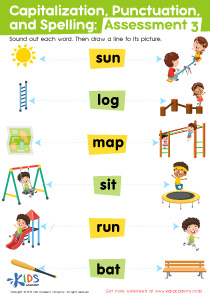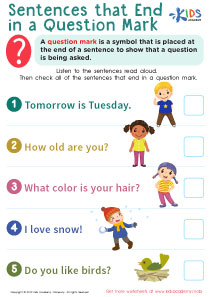Hand-eye Coordination Writing Worksheets for Ages 5-8
11 filtered results
-
From - To
Enhance your child's hand-eye coordination with our engaging writing worksheets designed specifically for ages 5-8. These activities focus on developing fine motor skills and improving control while writing, essential for reading and academic success. Each worksheet features fun, interactive exercises that make learning enjoyable, including tracing letters, completing patterns, and simple drawing tasks. By practicing these skills, your child will gain confidence in their writing abilities while honing their coordination. Perfect for home use or supplementary education, these printable worksheets will ensure that children not only learn but also have fun doing it! Get started today and watch your child's skills soar!


Snowman Tracing Winter Words Worksheet
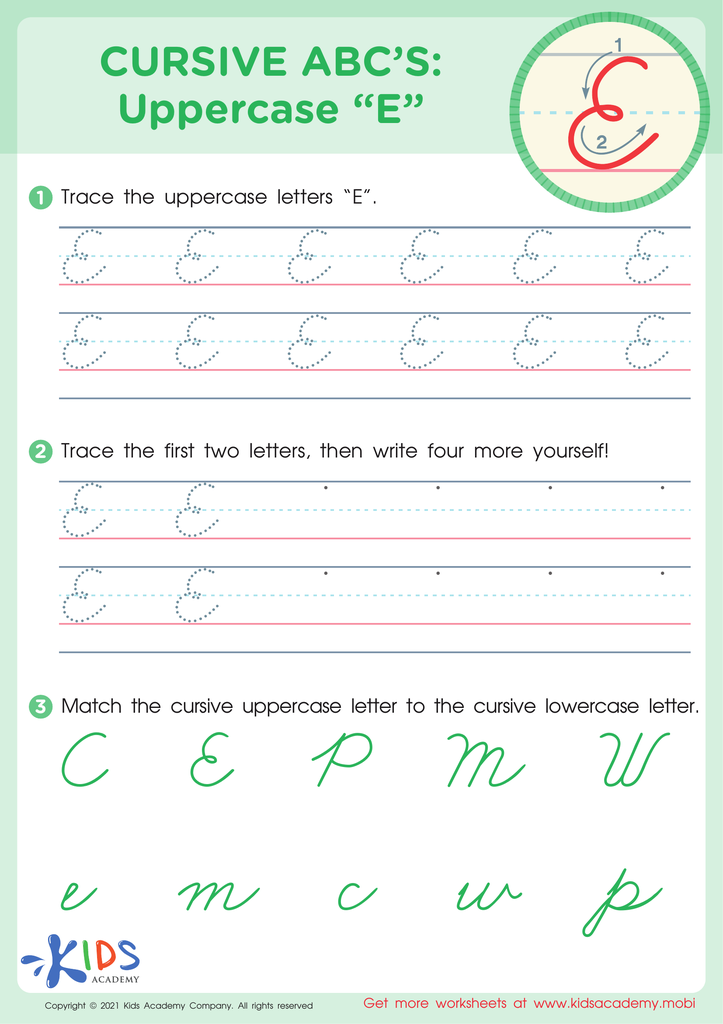

Cursive ABCs: Uppercase E
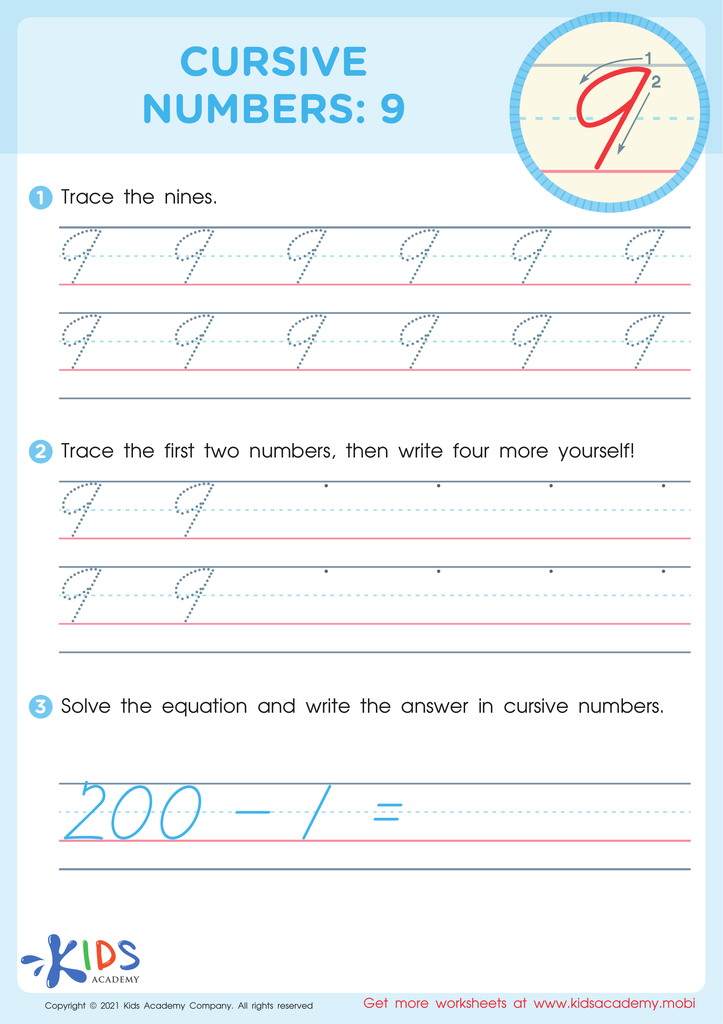

Cursive Numbers: 9 Worksheet
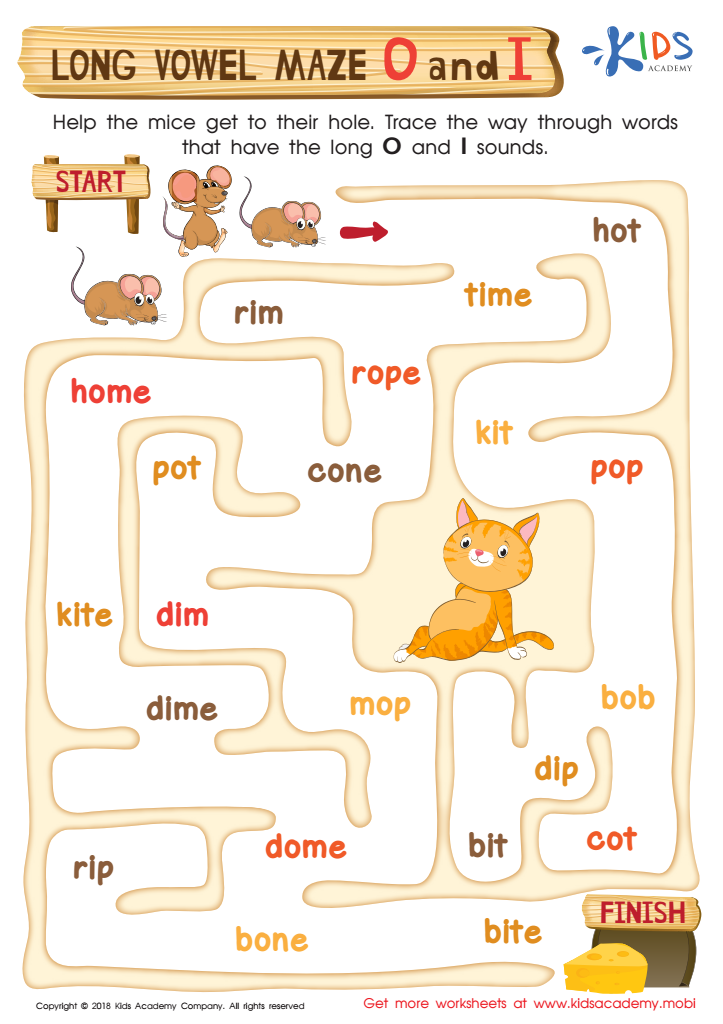

Long Vowel Maze /o/ and /i/ Worksheet
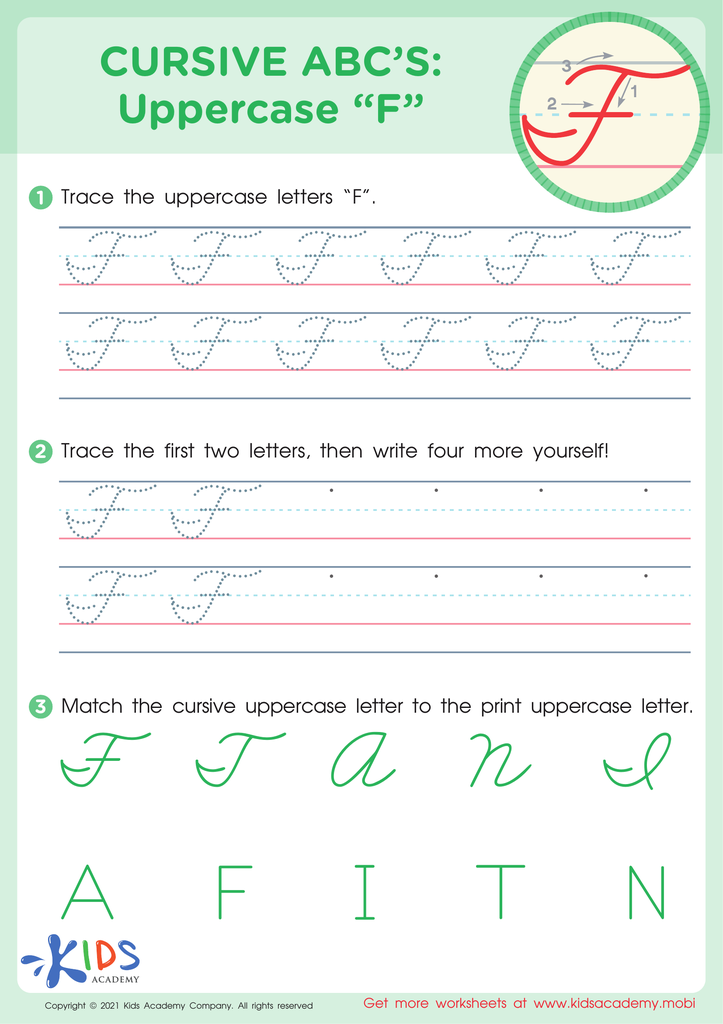

Cursive ABCs: Uppercase F
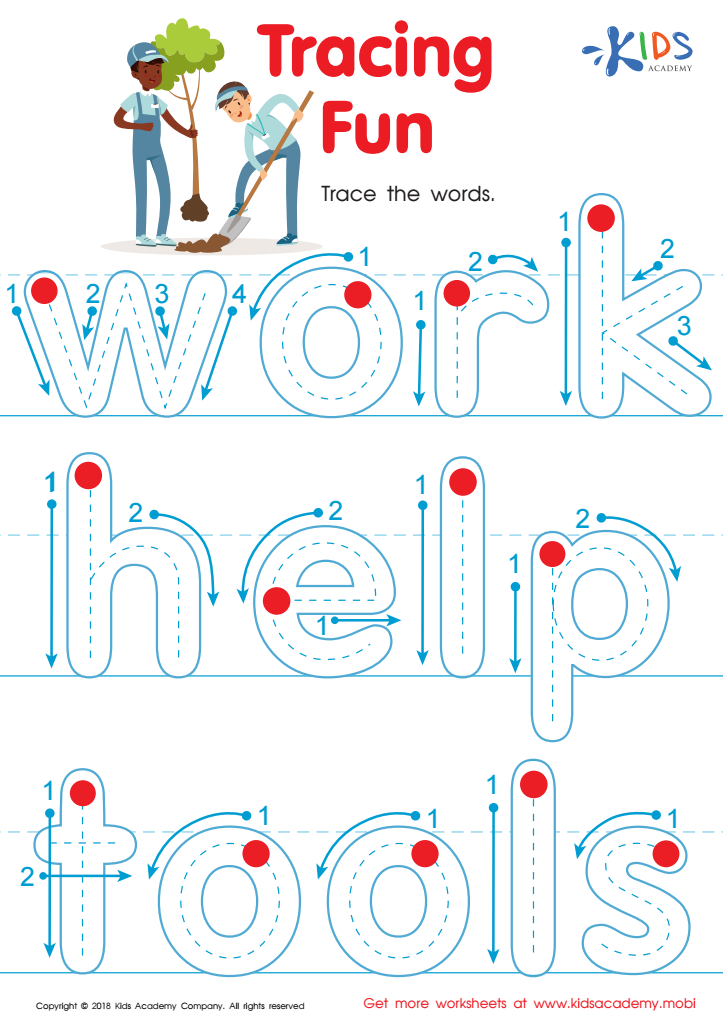

Tracing Fun Worksheet
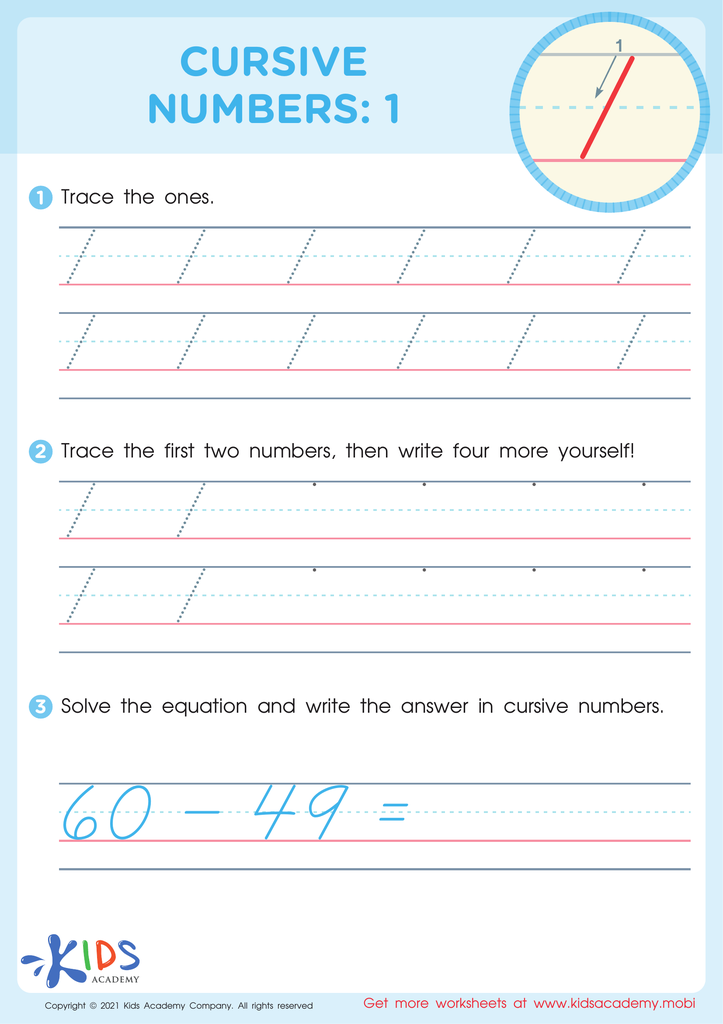

Cursive Numbers: 1 Worksheet
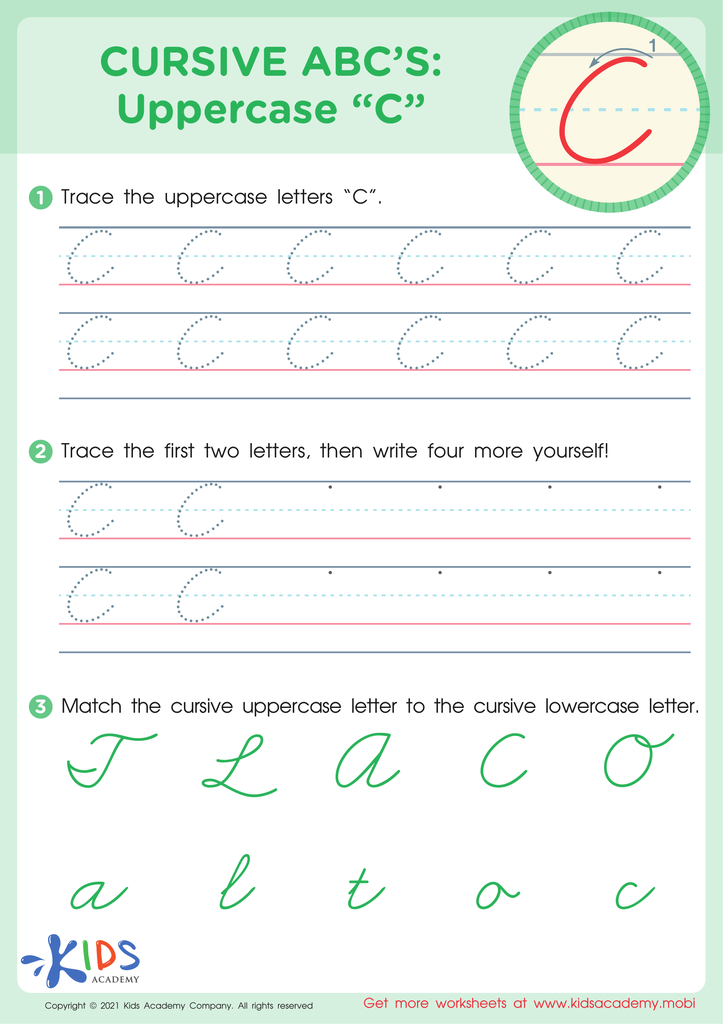

Cursive ABCs: Uppercase C
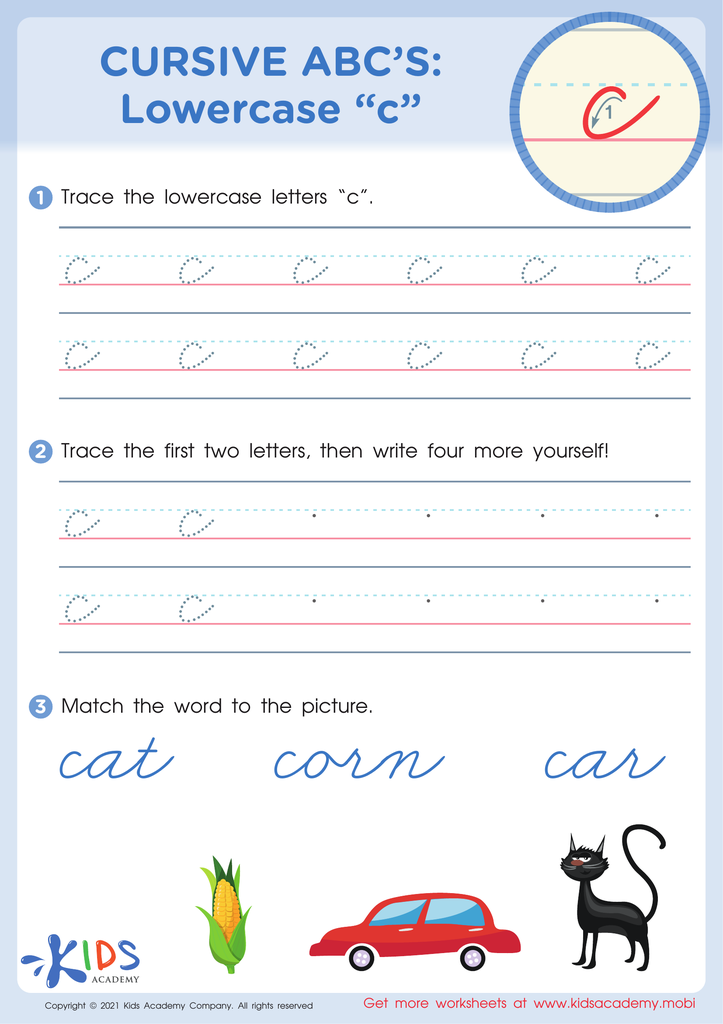

Cursive ABCs: Lowercase c


Cursive ABCs: Lowercase h
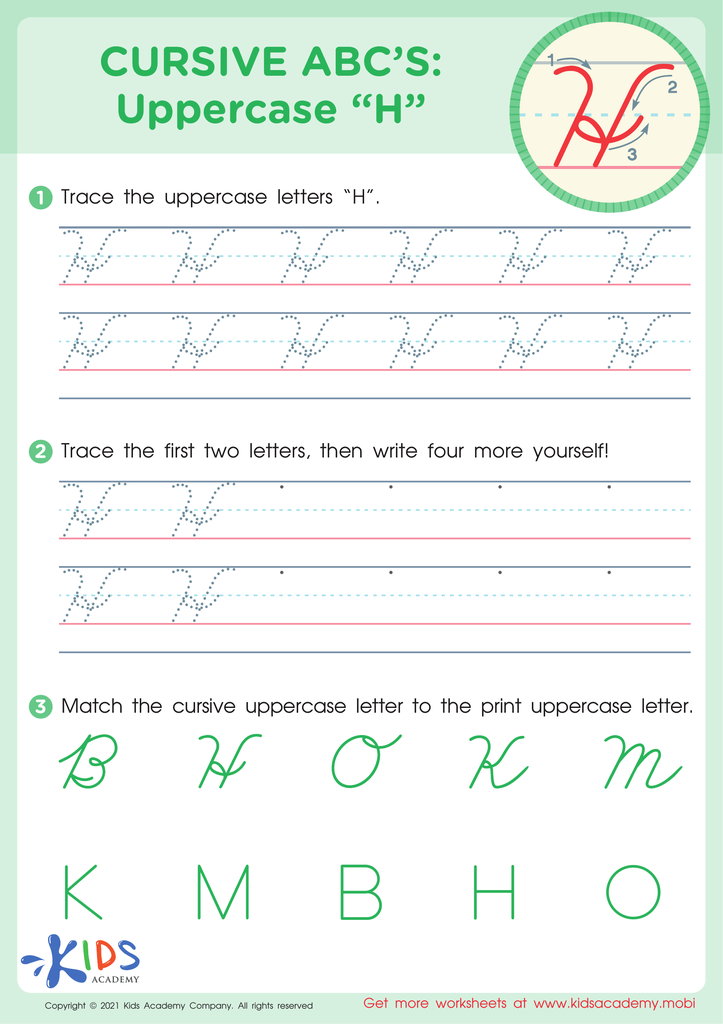

Cursive ABCs: Uppercase H
Hand-eye coordination is a crucial skill for children aged 5-8, as it fundamentally impacts their ability to engage in various learning activities, particularly writing. This skill involves the ability to synchronize movements of the hands and eyes, which is essential for tasks such as pencil grip, letter formation, and overall writing control.
Developing strong hand-eye coordination helps improve a child’s fine motor skills, enabling them to handle writing instruments effectively. When children practice writing, they refine their coordination, leading to neater handwriting and better spelling and grammar. Furthermore, this skill impacts other activities such as drawing and crafting, making it crucial for their creative expression.
For parents and teachers, supporting the development of hand-eye coordination through engaging activities—such as drawing, playing with building blocks, or participating in sports—can enhance a child’s confidence, concentration, and willingness to learn. Children with well-developed hand-eye coordination are often more successful in school and more enthusiastic about tackling new challenges. Investing time in this fundamental developmental aspect ultimately fosters children's overall academic achievement and emotional growth, making it a priority for parents and educators alike.
 Assign to My Students
Assign to My Students












